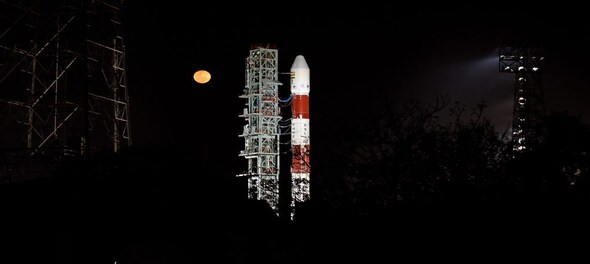
The Indian Space Research Organisation (ISRO) has begun its countdown to its first launch of the year, PSLV-C44 Kalamsat and Microsat-R, from Satish Dhawan Space Centre, Sriharikota, on Thursday at 11:37 PM.
The four-stage launcher PSLV (Polar Satellite Launch Vehicle) will carry the two major satellites — Space Kidz's Kalamsat and Defence Research and Development Organisation's (DRDO) Microsat-R.
"We will be launching 700-kg Microsat-R and Kalamsat with a new variant of Polar Satellite Launch Vehicle (PSLV)," K Sivan, chairman of Indian Space Research Organisation (Isro), told IANS.
Why today's launch holds significance
Launch vehicle
PSLV is ISRO's third generation launch vehicle. Today will be the first time the state-run space organisation is using PSLV's new variant, PSLV-DL, where the fourth stage with alternate between solid and liquid stages.
The DL mode will have a flight with just two-strap on motors. The older versions of the launch vehicle typically had six strap-on motors.
"In order to reduce the weight and increase the mass, an aluminum tank is used for the first time in the fourth stage," Sivan told IANS.
The fourth stage in this particular launch vehicle, which is the most crucial for placing the satellite in the desired orbit, will help to place the satellite to establish an orbital platform for carrying out experiments, unlike the previous variants which disposed the last stage.
After the two payloads are hurled in the planned orbits, the rocket will travel further into a circular orbit and carry out other space experiments.
Kalamsat
The nanosatellite, Kalamsat, was built by a student organisation Space Kidz India and has a life span of two months.
Kalamsat will be the first to use the launch vehicle's fourth stage (PS4) as an orbital platform. The earlier satellites of Space Kidz were placed suborbital ones.
The key satellite, named after former President APJ Abdul Kalam, will carry out experiments to help ease space explorations with the aim of lowering the cost.
The space initiative, the organisation said, will experiment using systems like OBC (On Board Computer), EPS (Electrical Power Subsystem) and explore ways to communicate from space.
"The Kalamsat is a 10cm cube nano-satellite weighing about 1.2 kg. The satellite's life span is about two months and its cost is about Rs. 12 lakh," Srimathy Kesan, founder-CEO of Space Kidz India, told IANS.
The team to build the student payload was led by Rifath Sharook, an 18-year-old from Pallapatti, a town in Tamil Nadu.
Payloads are the scientific instruments carried by a satellite and in this case, the OBC, EPS, etc. Kalamsat is, by far, the world's lightest and first ever 3D-printed satellite.
Microsat-R
The satellite developed by DRDO is typically an imaging satellite. Microsat-R, according to The Hindu was “assembled outside and ISRO only interfaced it” with its own systems and the launch vehicle.
Many details on Microsat-R were not shared as there have been media reports stating that the satellite is for military use.
The imaging satellite, which will capture the required images for the defence organisation, will be placed within 15 minutes after take-off in a polar orbit 274 km away from Earth, ISRO said.
First Published: Jan 24, 2019 11:43 AM IST
Check out our in-depth Market Coverage, Business News & get real-time Stock Market Updates on CNBC-TV18. Also, Watch our channels CNBC-TV18, CNBC Awaaz and CNBC Bajar Live on-the-go!


2024 Lok Sabha Elections | Why Kerala is in focus as the second phase begins to vote
Apr 26, 2024 9:33 AM
Bengaluru Rural Lok Sabha election: Over 20% voter turnout recorded by 11 am
Apr 26, 2024 9:11 AM

